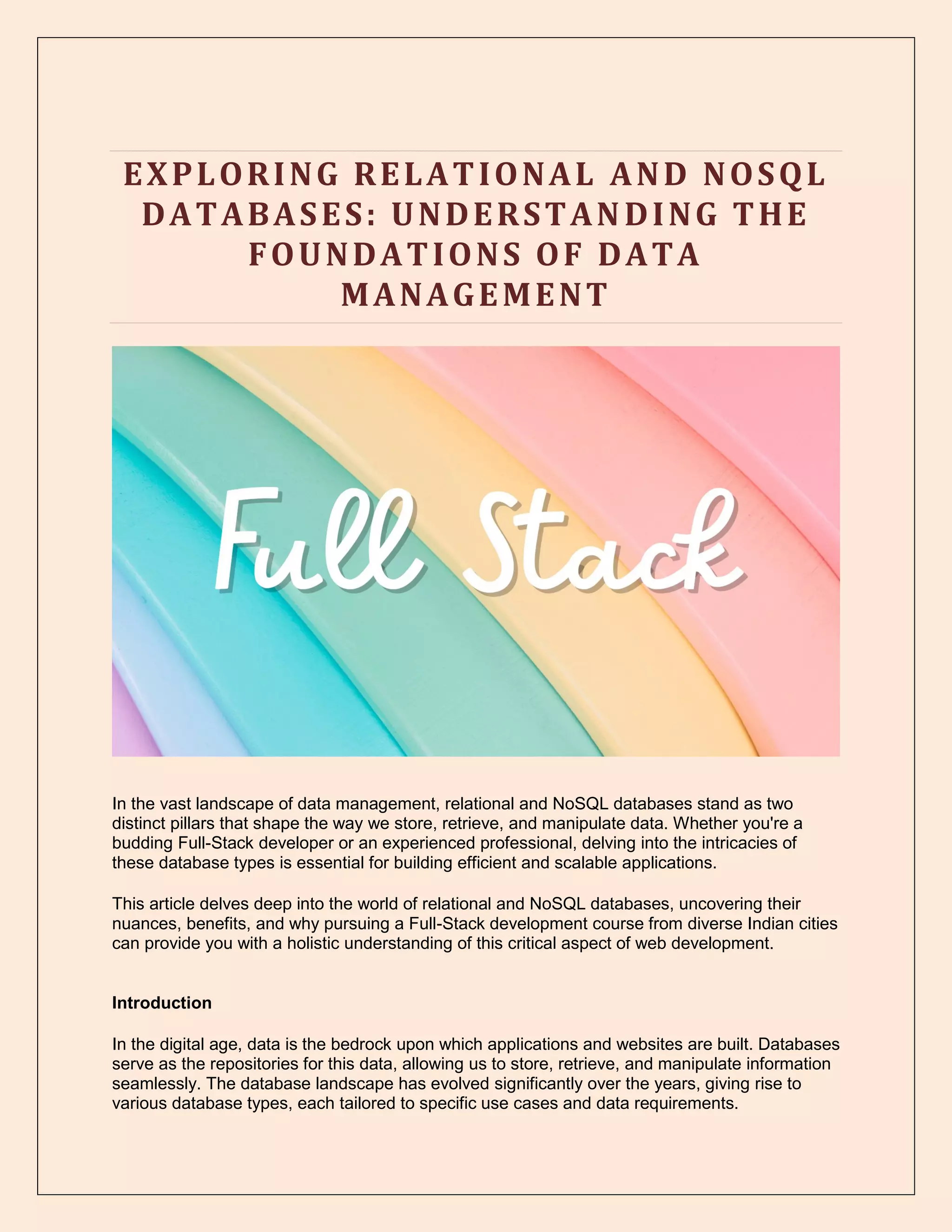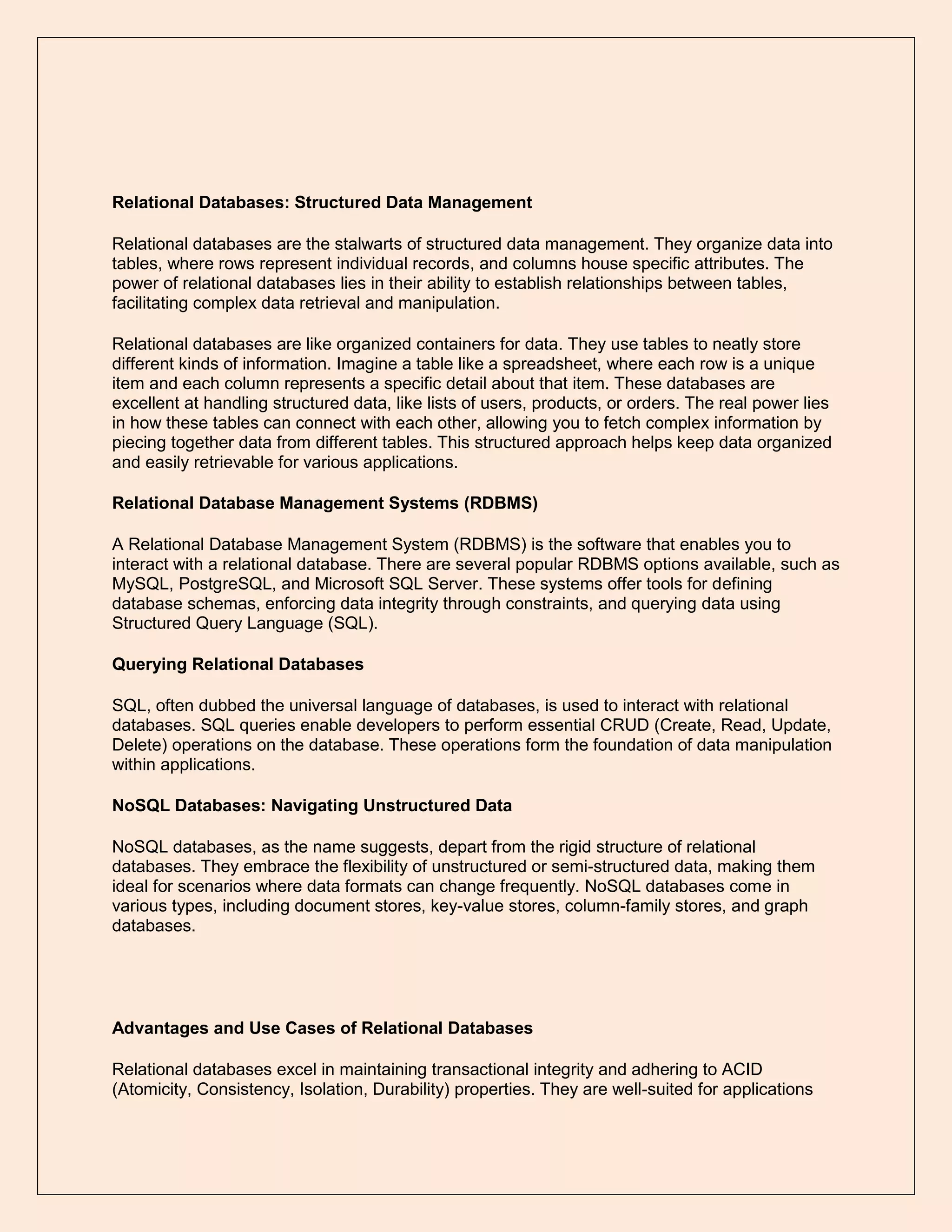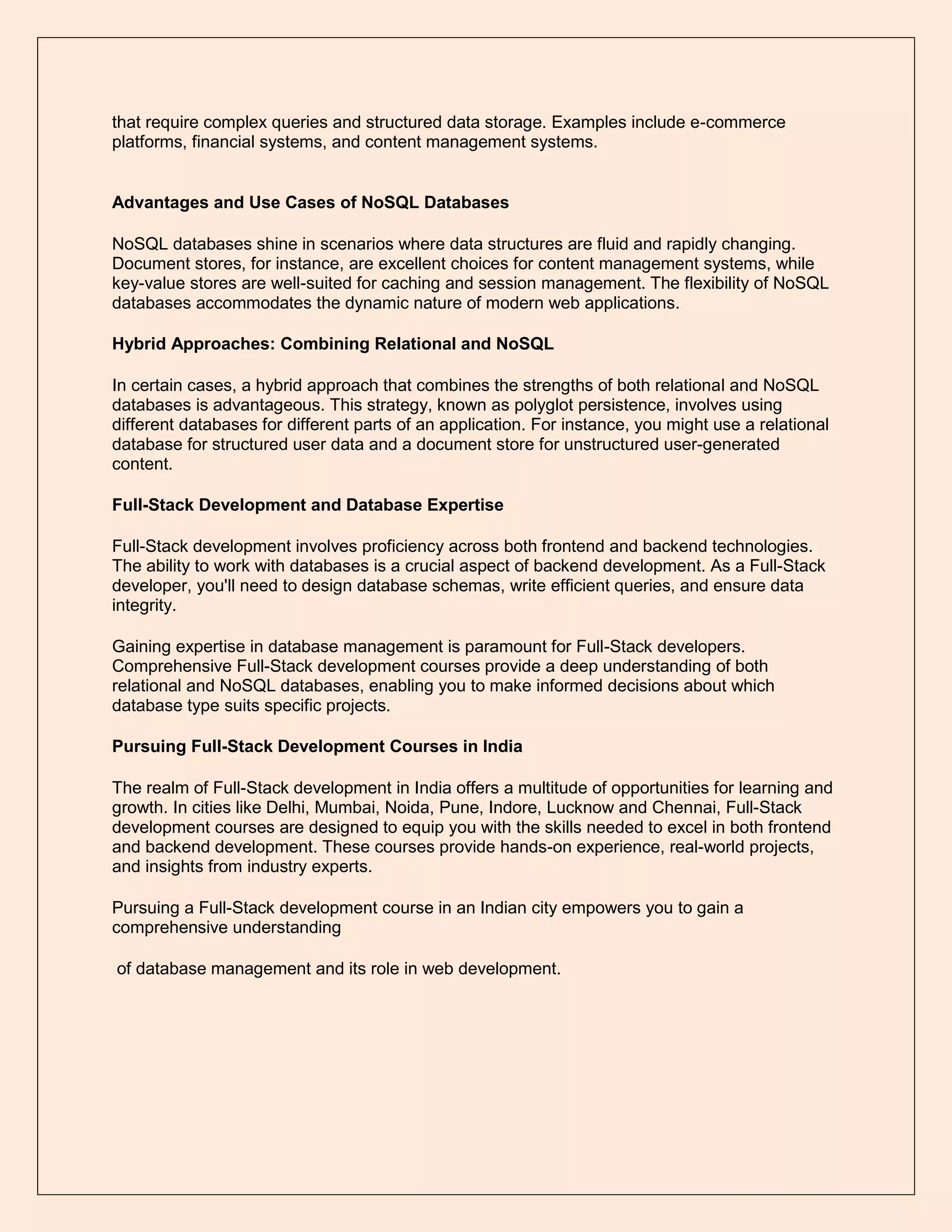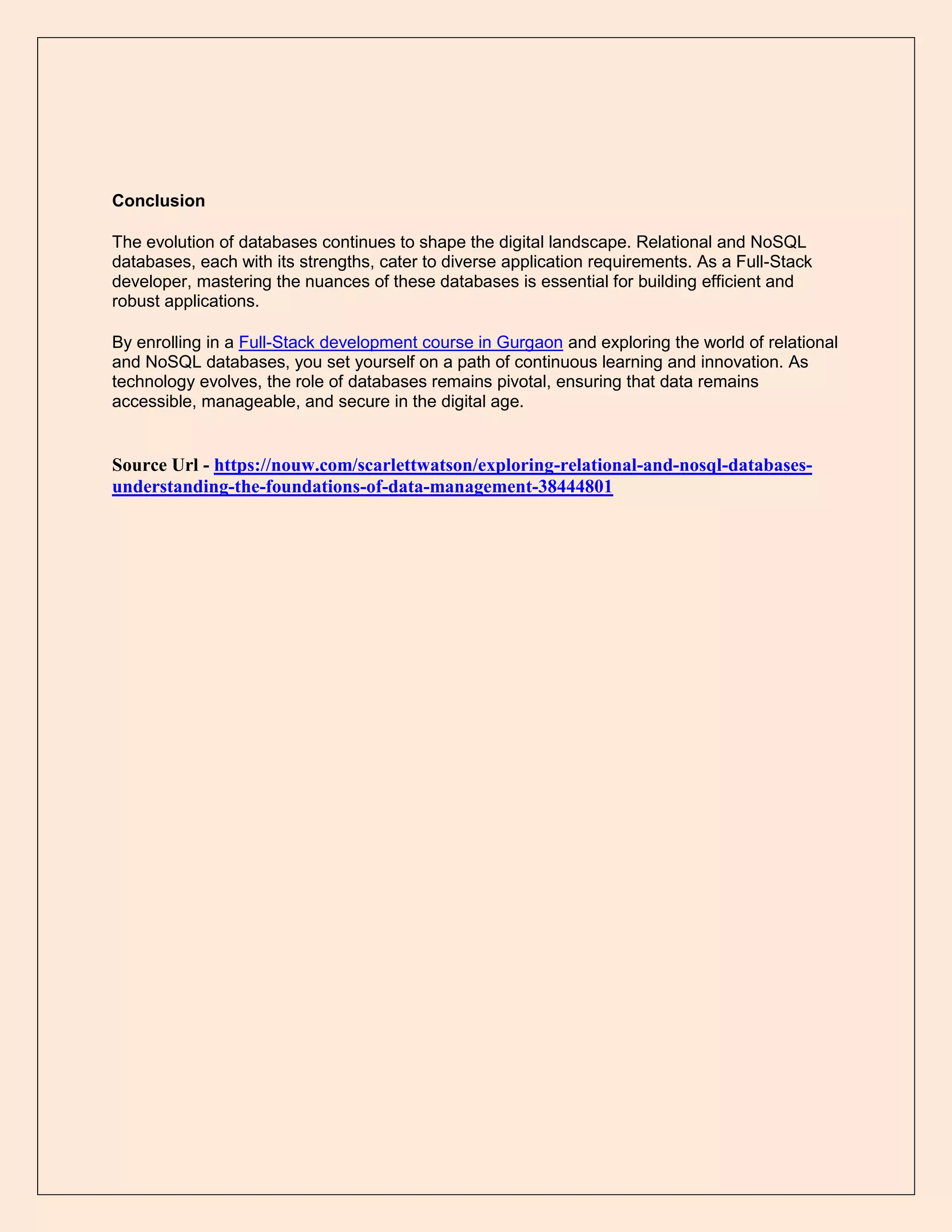This document explores the fundamentals of relational and NoSQL databases, highlighting their distinct roles in data management and their importance for full-stack developers. It discusses the structured nature of relational databases versus the flexibility of NoSQL databases and their respective use cases. The article emphasizes the value of pursuing full-stack development courses in India to gain a comprehensive understanding of these database types and their application in modern web development.



